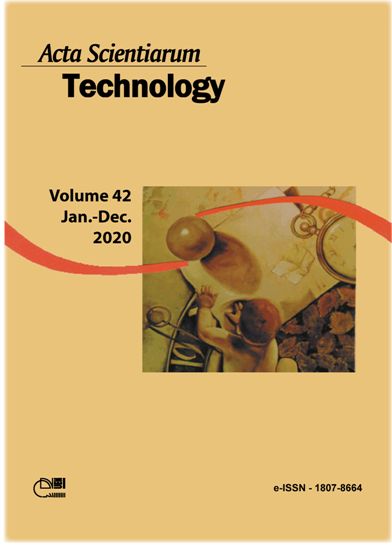Antitumoral activity, antioxidant capacity and bioactive compounds of ginger (Zingiber officinale)
DOI:
https://doi.org/10.4025/actascitechnol.v42i1.45724Palavras-chave:
cytotoxicity; extraction; flavonoids; mutagenicity; phenolic compounds; tumor cells.Resumo
Zingiber officinale, popularly known as ginger, it is in National Relations of Medicinal Plants of Interest to SUS (RENISUS) aiming at the appropriate and safe use of medicinal plants. Then, it is necessary to characterize and determine their bioactive compounds, their cytotoxic, mutagenic and/or antitumor properties, in order to guarantee food safety and its beneficial coadjuvant effects. The ginger rhizomes were dried at temperatures 40, 60, and 80°C and the bioactive compounds were extracted with methanol and ethanol (70:30 and 95:5). The rhizomes showed to be intermediate source of vitamin C. The highest levels of anthocyanins and yellow flavonoids were dried at 40°C. The highest content of phenolic compounds was for the extracts MeOH 70:30 and EtOH 70:30 at 80°C and for flavonoids MeOH 95:5 at 40°C. Data showed a positive correlation with the content of bioactive compounds and the antioxidant activity. The EtOH 70:30 extract at 80°C, did not present a cytotoxic effect, by calculating the mitotic index, or mutagen, by the evaluation of the chromosomal alterations, for the Allium cepa L. This extract showed a cytotoxic effect for human kidney tumor cells, by MTT test, for all concentrations tested and in the two evaluation times. The data serve as basis for the consumption of ginger, with a high content of bioactive compounds, with no harmful effect for the normal cells studied and with antitumor potential.
Downloads
Downloads
Publicado
Como Citar
Edição
Seção
Licença
DECLARAÇíO DE ORIGINALIDADE E DIREITOS AUTORAIS
Declaro que o presente artigo é original, não tendo sido submetido í publicação em qualquer outro periódico nacional ou internacional, quer seja em parte ou em sua totalidade.
Os direitos autorais pertencem exclusivamente aos autores. Os direitos de licenciamento utilizados pelo periódico é a licença Creative Commons Attribution 4.0 (CC BY 4.0): são permitidos o compartilhamento (cópia e distribuição do material em qualqer meio ou formato) e adaptação (remix, transformação e criação de material a partir do conteúdo assim licenciado para quaisquer fins, inclusive comerciais.
Recomenda-se a leitura desse link para maiores informações sobre o tema: fornecimento de créditos e referências de forma correta, entre outros detalhes cruciais para uso adequado do material licenciado.



















